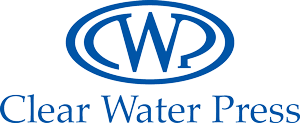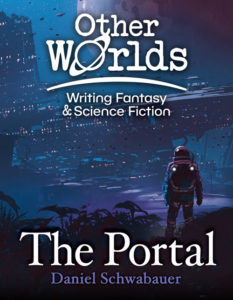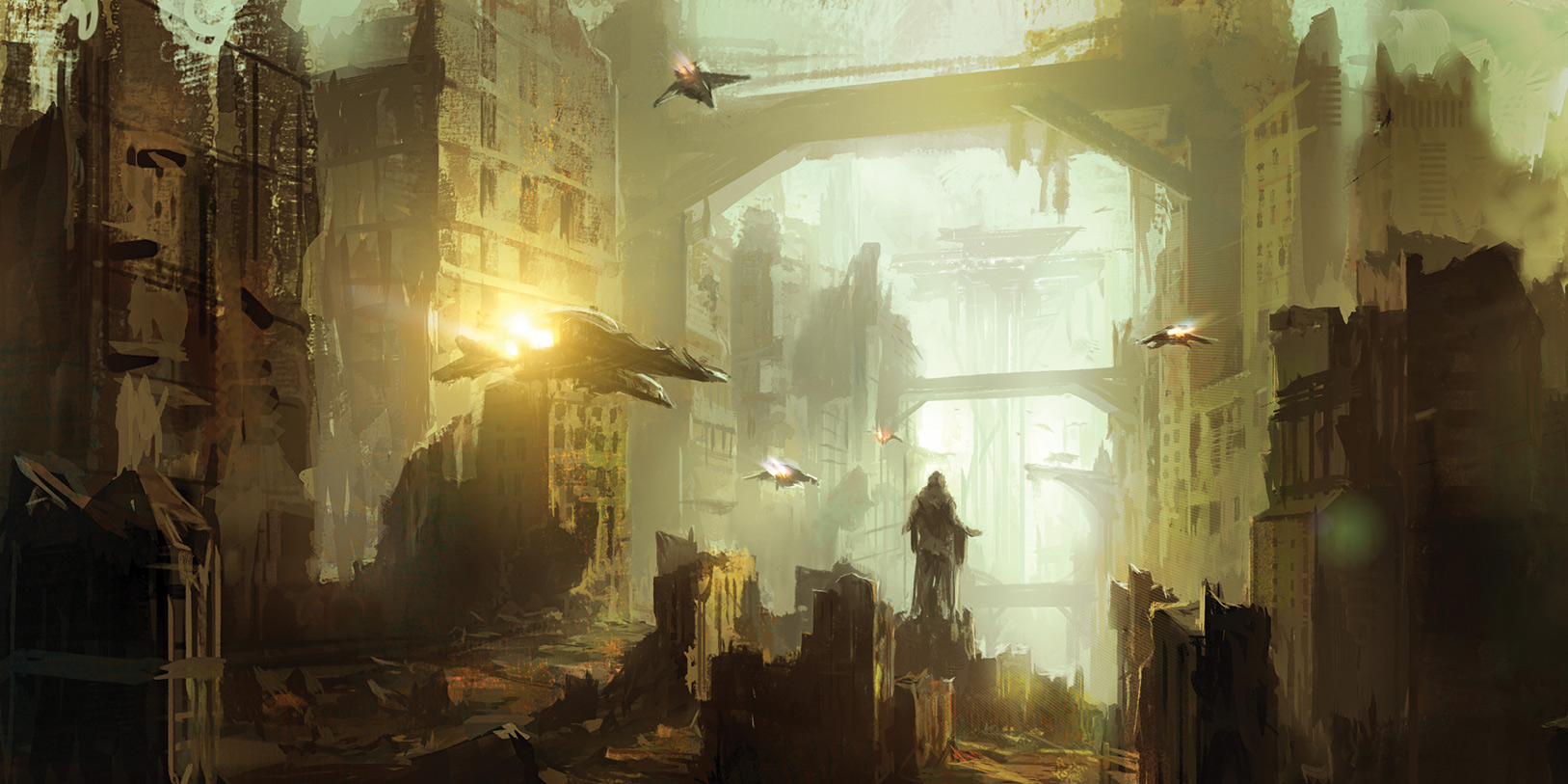
Other Worlds: Writing Fantasy & Science Fiction
NEW: Other Worlds is a full Language Arts curriculum comprising 72 lessons over two semesters. The content of this course is rich in both literary study and professional writing expertise.
Daniel Schwabauer takes students who have already completed The One Year Adventure Novel on a year-long exploration of the genres of fantasy and science fiction. Students will not only grasp the concepts that underpin these forms but will also write a compelling speculative novel.
The course is taught on video and supplemented by a full textbook (with assigned readings), a new workbook focused on world-building and thematic structure, a pair of classic novels (The Jungle Book and Deathworld), and a Teacher’s Guide.
Note: What was previously a module has been greatly expanded and packed with in-depth teaching! This is not simply a second version. It is a new product, first offered Summer of 2022!
Master the Art of Speculative Fiction
 • Learn the history and theories behind the world’s most influential genres
• Learn the history and theories behind the world’s most influential genres
• Discover how to tell which ideas will work in a story and which ones won’t (before you write)
• Explore the key concept of “otherness” in world-building
• Learn to examine your own ideas critically
View the Syllabus and Lesson Table here >
Prerequisite: The One Year Adventure Novel
Because Other Worlds does not repeat the core instruction provided through The One Year Adventure Novel (OYAN) curriculum, it should be considered an educational sequel. Please do not assume the course can be taken successfully without first completing OYAN. You really do need to take The One Year Adventure Novel first.
// The Other Worlds Package Includes:
(1) 72 Video lessons
72 Engaging video lessons taught by award-winning author Daniel Schwabauer. Available to stream on our Cloud video platform! Video lessons offer English closed captioning.
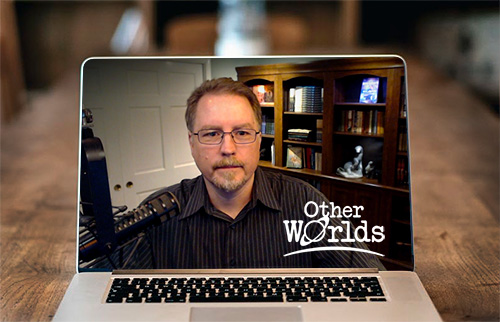
PLUS, all the physical books listed below:
Textbook, Workbook, Anthology, and Teacher’s Guide
(2) Textbook
The Portal is the course textbook: 72 lessons corresponding to the video lessons and complete with assigned reading excerpts from classic science fiction and fantasy stories.
(8.5″ x 11″)
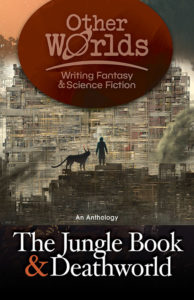
(4) Anthology
An anthology of two genre classics:
The Jungle Book, by Rudyard Kipling
Deathworld, by Harry Harrison
(5.5″ x 8.5″)
(3) Workbook
The Other Map is similar in concept to the OYAN workbook, but is designed specifically to help students outline a science fiction or fantasy novel.
(8.5″x11″)

(5) Teacher’s Guide
The Teacher’s Guide provides grading rubrics as well as guidelines for how to help students with the unique challenges of writing a fantasy or science fiction novel.
(8.5″x11″)
// Lessons:
Semester 1:
Welcome
Into the Unknown
1. Other Worlds (An overview of the genres)
2. One Sentence Books (Creating a logline)
3. The Five Elements (Summarizing via the five creative elements of Story)
World Building
4. Frankenstein’s Monsters (Sci-fi themes)
5. Ancient Worlds (The roots of Fantasy)
6. The Price of Otherness (What price must be paid for the fantastic?)
7. World Building (What makes a world other?)
8. Alien Races (The inhuman world: mapping humanoids)
9. Bug-Eyed Monsters (The creature world: mapping monsters)
Five Elements of Story
10. Uncommon Heroes (Dialing into the heroic)
11. The Story Goal (Making the Story Goal matter)
12. Sharpening Knaves (Creating dramatic villains)
13. Unidentified Flying Otherness (The role of suffering)
14. An Ideal World (Ideals as key to relevance)
15. Ugly Treatment (Turning the logline and synopsis into a treatment)
Structure
16. Conflicted (Levels of conflict)
17. Great Lies (False beliefs and character change)
18. Crucible (The value of plot crucibles)
19. The Image of Success (Establishing a closing image)
20. This Chapter is a Disaster (The structure of Disaster scenes)
21. What a Dilemma (The Structure of Dilemma scenes)
Chapter Sketches
22. One: Sketching (How to sketch to avoid writer’s block)
23. Three: Human Heroes (Connecting to the protagonist)
24. Six: Mirror, Mirror (Mirror moments)
25. Nine: Bankrupt! (Paying the price)
26. Eleven: The Third Element (Expanding conflict)
27. Twelve: Coming Home (Sketching resolution)
28. Two: The Two Selves (Creating human depth)
29. Four: Showing Otherness (Exploring the new world)
30. Five: Characters Who Breathe (Characters in arcs)
31. Seven: I Feel Your Pain (Expanding the price of victory)
32. Eight: Wonderama (The untamed wonder of the fantastic)
33: Ten: The Power of Principle (True story structure vs false)
Semester 2:
Stepping Through
34. Story Beats (Types of story beats)
35. The Pre-Story World (The scene before the beginning)
36. Here There Be Dragons (Writing hooks)
37. The Golden Age (The glory years of science fiction)
38. State of Mind (Creating believable mental states)
39. Extreme State of Mind (Extreme mental states in narration)
40. Revealing Truth (Progressive revelation)
41. Word Photography (The power of good prose)
42. Cutting the Thread (The role of the forbidden)
43. Images & Concepts (When and how to manipulate the imagination)
44. Through the Looking Glass (Descent into wonder)
45. Particular Accelerator (Characterizing situations through detail)
The Perilous Realm
46. Origin Story (Science fiction and history)
47. Edge Dwellers (True heroes live at the edge)
48. Ordinary Heroes (True heroes are relatable)
49. Real Dialogue (Dramatic dialogue)
50. The Plot Shall Advance (The function of dialogue in plot)
51. Revealing Character (The function of dialogue in character)
52. Dialogue Tips (Essential tips for dramatic dialogue)
53. Causation (Stories must be structured causally)
54. Utopia (The history of humanity’s visions for Earth)
55. Pacing Action (How to pace an action sequence)
56. Focusing Action (How to focus an action sequence)
57. Dark Worlds (The role of horror in spec-fic and the need for true hope)
Real Change
58. Wordsmiths & Storytellers (The two writing personalities)
59. Literary Symbols (Where real symbolism originates)
60. Death by a Thousand Lies (Telling the truth to oneself in fiction)
61. Joymakers (Writing from a place of joy)
62. Overwriting (Avoiding the dreaded purple)
63. Dual Purpose (How to make prose great)
64. Deus ex Machina (The deadliest type of wrong ending)
65. Writing Your Self (How to write what you know)
66. Swords and Sandals (The development of Fantasy as a genre)
67. The Story as Parable (Techniques of the parable can be useful)
68. A Frayed Knot (Revisiting your resolution)
69. Loss is More (The essential nature of endings)
Revision
70. Ye Olde Mistakes (Revising by various common mistakes)
71. Turning Points (Revising by turning points)
72. Growing Things (Revising by character—and author—growth)
